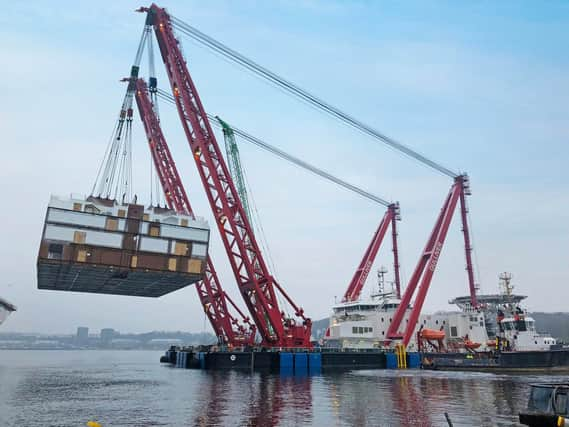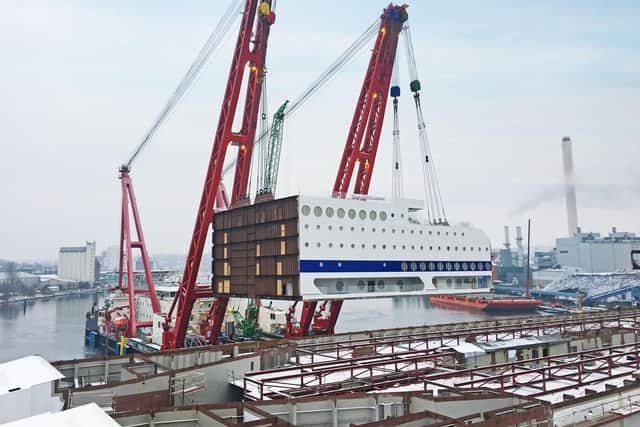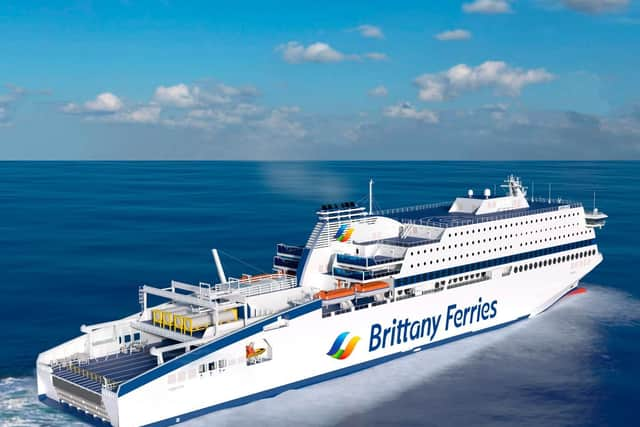Brittany Ferries' new cruise ferry takes shape


Honfleur is a new liquefied natural gas-powered cruise ferry, which the firm said is smoother, quieter and pollutes less than traditional cruise ferries.
Each block is five decks high, more than 40 metres in length and spans Honfleur's full 31-metre width. They house her airy public areas, her 261 passenger cabins and her bridge.
Advertisement
Hide AdAdvertisement
Hide AdDays before the first block was lifted into place, crowds gathered to see Honfleur's 10,000-tonne hull make the backwards slide down a slipway and into the Baltic Sea at a ship launching ceremony in Germany.


Brittany Ferries' chief executive, Christophe Mathieu, said: '˜In just seven days Honfleur has taken to the water for the first time, grown in height by about 20 metres, and acquired her distinctive profile.
'˜From here on, the story begins to move from the development of her innovative LNG infrastructure and hydrodynamic hull to focus on the richness of the passenger experience.
'˜This includes restaurants, cinemas, cafes and boutiques, as well as a range of digital and immersive spaces to be savoured on board.'
Advertisement
Hide AdAdvertisement
Hide AdHonfleur's first journey will take passengers on the route from Portsmouth to Caen and Ouistreham next summer. The cruise ferry's hull was built at the Flensburger Schiffbau-Gesellschaft shipyard in northern Germany.


The blocks were constructed in Poland's historic Gdansk shipyards before being towed on barges to the FSG yard. They were placed on the hull by Gulliver, a 22,400-tonne heavy lift vessel.
Each was placed with an accuracy of just a few millimetres. Work has now begun to weld them into place, connecting pipework and cabling, as well as fitting and furnishing cabins and public areas.
Anna-Lena Bubenheim, project manager for Honfleur, said: '˜It's a tribute to the skill of our shipbuilders, and our partners and suppliers, that these huge sections fit together with millimetric accuracy.'